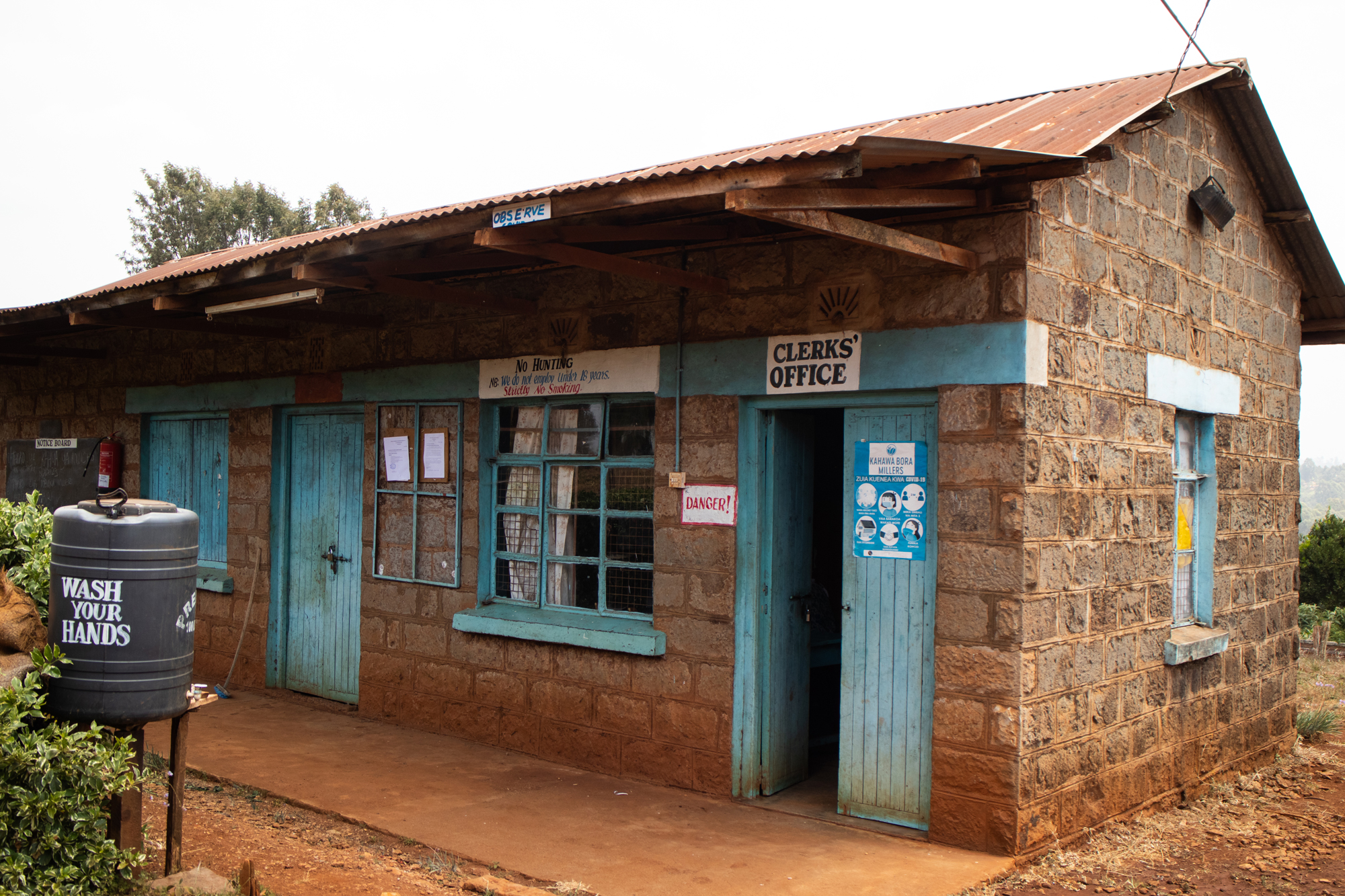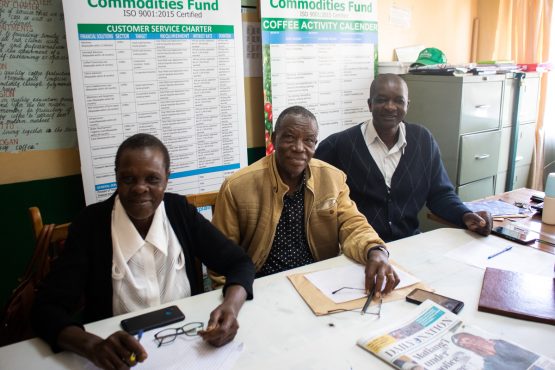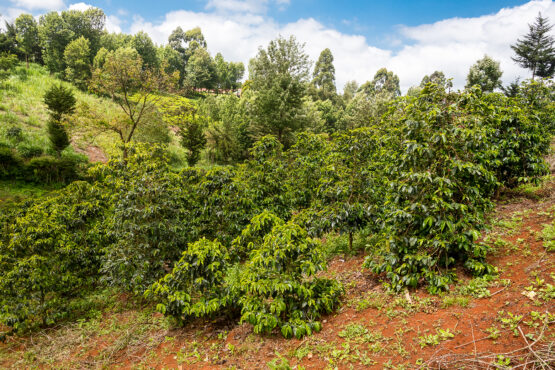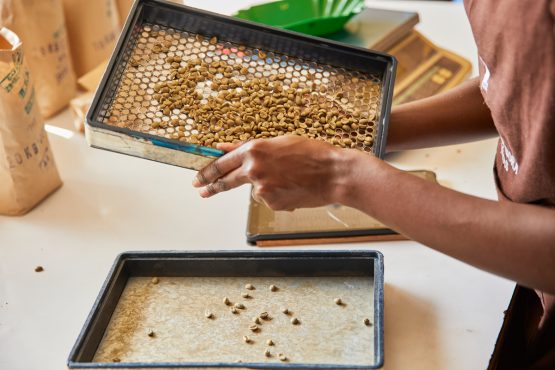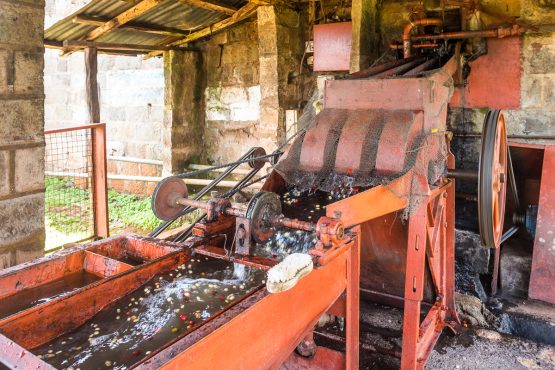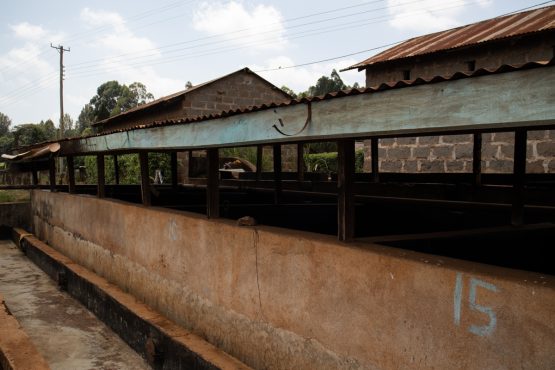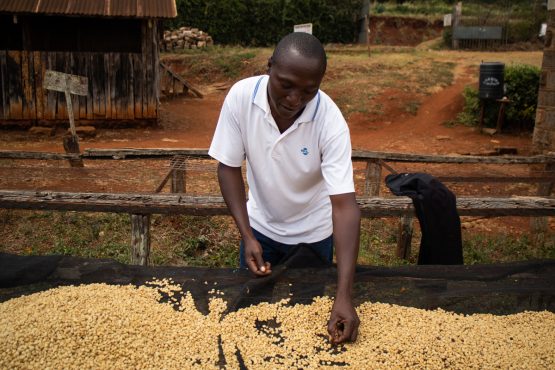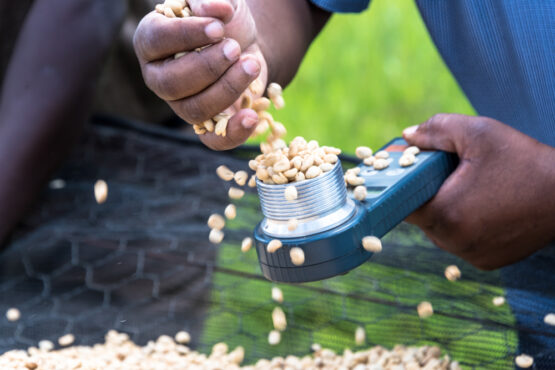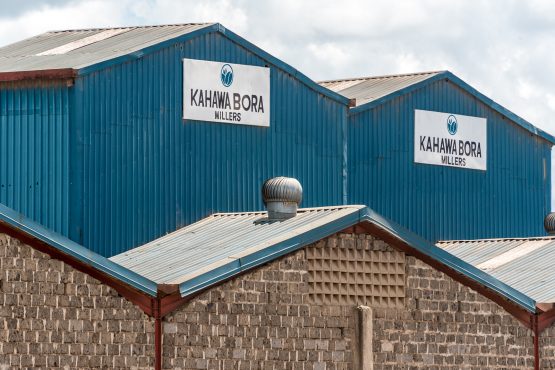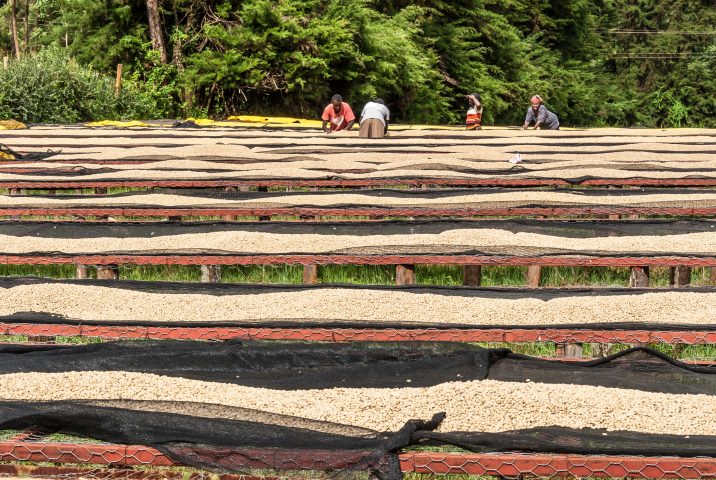Ichuga AB
Cranberry, dark chocolate and lime, with great structure and balance. Rich and sweet.
Ichuga is a washing station (or factory, as they are called in Kenya) located near Mt. Kenya National Park, in the Karatina Municipality of Kenya’s Nyeri County. Established in 1958, it is one of four active washing stations – along with its sister factories, Kiangundo, Gachuiro and Kiamaina – owned by the Kiama Coffee Farmers’ Cooperative Society (FCS).
Ichuga receives coffee cherries from 726 of the cooperative’s members (230 male, 496 female), who grow coffee trees on nearby farms, located at around 1,700 meters above sea level. Once harvested, coffee cherries are delivered to Ichuga, where they are processed and dried under the management of Stephen Kinyua, ahead of being transported to Nairobi for sale (either directly or through the auction system).
Besides Stephen, Ichuga employs five permanent staff members and an additional four to five workers during the season. At peak harvest the factory’s three-disc pulper can process up to 1500kg of cherry an hour, which is then dried and sorted on Ichuga’s 40 raised tables.
The cooperative has made several investments in Ichuga in recent years. They have upgraded to digital scales, thereby providing farmers and clerks with better accountability when coffee cherries are delivered. Additionally, the coffee washing channels have been tiled, making them easier to keep clean and minimising the risk of ‘stinkers’ (seeds that get stuck in the channels and over ferment, causing defective flavours in the cup). The factory has also achieved the Rainforest Alliance certification, as part of Kiama’s commitment to social, economic and environmental sustainability.
Ichuga sits at 1,800m above sea level and is located near the Ragati river. Fresh, clean water is pumped from Ragati to process coffee, contributing to its exceptional quality. The area surrounding the river is an 8,000-hectare conservancy made up of montane forest and marshes that are home to a myriad of native wildlife, including elephant, buffalo and leopard.
ABOUT KIAMA FARMERS’ COOPERATIVE SOCIETY
Kiama FCS was formed in 2005 when two existing cooperatives merged into one. Most of their 2,100 farmer members inherited their farms from their parents who were members of those cooperatives. Kiama now owns four washing stations in Nyeri (Gachuiro, Kiangundo, Ichuga and Kiamaina), along with a cherry collection point, Inwagi. Kiama FCS supports its farmer members by offering pre-harvest financing, allowing them to plan and invest in the upcoming crop. They also buy inputs in bulk and distribute them to members at a lower cost than otherwise possible.
Kiama has six members on its board, which is currently overseen by Chairman Charles Nolamburi Ngure and Senior Manager Iddah Rose Wangui Kigathi. Board members must be active farmers and are re-elected every three years, to avoid corruption. The cooperative employs 24 permanent staff members, who work out of their office in the town of Baricho, some 130km north of Nairobi.
Kiama FCS employ Sucastainability as their marketing agent. Chairman Ngurevalues Sucastainability’s services for their on the ground approach to improving productivity and quality through training and education programs. Beyond this, Sucastainability connects Kiama FCS to specialty focused buyers (like MCM) that will pay high premiums for exceptional quality. Head here to learn more about Sucastainability’s work in Kenya.
ABOUT NYERI
Nyeri County is part of Kenya’s former Central Province, which was dissolved in 2013. The area includes Murang’a, Nyeri, Kirinyaga, Kiambu and Nyandarua Counties, and is traditionally the homeland of people of Kikiyu ethnicity. The central highlands of Kenya are considered to be one of the wealthiest areas of the country, due to the incredibly fertile land, geographical proximity to the capital, Nairobi, and close integration with the country’s colonial administration before Kenya gained independence in 1962. This integration afforded the communities of Central Kenya with opportunities for education, business and political prowess, despite the various injustices of the colonial government. The Kikiyu people have a long and proud history of agriculture and the region is farmed intensively, with coffee, tea and dairy being the most important modern crops.
The coffees in this lot are grown on the foothills of the extinct volcano, Mt Kenya, in an area defined by its bright red, nutrient-rich, volcanic soil, high elevations and cool climate, all of which contribute to the outstanding quality of coffees produced here. Most farmers in Nyeri are smallholder cooperative members – with farm size averaging just half a hectare – and grow coffee as a cash crop alongside food crops like banana, maize, macadamia, avocados and vegetables. Tea and dairy are also important sources of income for the producers.
Many of the producers in the region are second-generation landholders, whose parents would have purchased and planted the land. Most coffee farms in Nyeri were planted in the 1950s, after agricultural reform allowed for small Kenyan farmers to produce cash crops on their family farms (instead of only on large, British owned estates). At that time, it was recommended to plant SL-28 and SL-34, which remain the predominant varieties found in the area. Both cultivars have Bourbon and Moka heritage and are named after the laboratory that promoted their wider distribution in Kenya during the early 20th Century: Scott Laboratories. This lot also contains a small percentage of the hybrid varieties Ruiru 11 and Batian, which were cultivated as more robust varieties, with better resistance to Coffee Berry Disease and Coffee Leaf Rust. Both varieties have been backcrossed with SL-28 and SL-34 to achieve a high cup quality.
GRADING
Kenya uses a grading system for all its exportable coffee lots. The grading system is based on the size and assumed quality of the bean. A coffee’s grade is directly correlated with the price it attracts at auction or through direct trade.
This lot is graded as an AB. This grade is easily defined by size (in this case, AB means that the beans are screen size 15 and above) and to a certain extent, quality. While it is assumed that AA lots represent the highest quality, we have often found AB and peaberry lots to be just as good.
HOW THIS LOT WAS PROCESSED
All the coffee cherry is hand-picked and delivered on the same day to the washing station, where it undergoes meticulous sorting. This is also done by hand and is overseen by a ‘cherry clerk’ who ensures any unripe and damaged cherries are removed. The ripe cherry is then digitally weighed and recorded, and the farmer receives a receipt of delivery.
The coffee is then placed in a receiving tank and pulped using a four-disc pulping machine to remove the skin and fruit from the inner parchment layer that protects the green coffee bean. After being pulped, the coffee is sorted by weight using water, with the highest quality and densest beans being separated out from the lighter, lower-quality beans.
The coffee is then dry fermented for 20–24 hours, to break down the sugars and remove the mucilage (sticky fruit covering) from the outside of the beans. Whilst the coffee is fermenting it is checked intermittently and when it is ready it is rinsed and removed from the tanks and placed in a washing channel.
The parchment-covered coffee is then washed with fresh water from the nearby Ragati River and sent through water channels for grading by weight. The heavier coffee, which sinks, is considered the higher quality, sweeter coffee, and any lighter density or lower grade coffee beans are removed. The beans are then sent to soaking tanks where they sit underwater for a further 48 hours. This process increases the proteins and amino acids, which in turn heightens the complexity of the acidity.
After soaking, the coffee is pumped onto deep drying beds where they drain for 1-2 hours, before being transferred to raised drying tables (also known as African beds). As they dry the parchment is turned constantly to ensure even drying, and so that any defective beans can be identified removed. Time on the drying tables depends on the weather, ambient temperature and processing volume: taking anywhere from one to three weeks to get to the target moisture of 11–12%. After drying the coffee is moved to conditioning beds, where it rests in parchment for about a month. This resting period helps to stabilise water activity and contributes to long-lasting quality and vibrancy in the cup.
Once the coffee is ready it is transported to Kahawa Bora Mill (“good coffee mill”) to be dry milled and prepared for shipping. Kahawa Bora is located in Thika, about 1hrs drive from Nairobi.
WHY WE LOVE IT
Coffees from Nyeri are renowned for being complex, bursting with blackcurrant and blackberries. This lot of Ichuga is lifted and floral, with great intensity and clarity.
